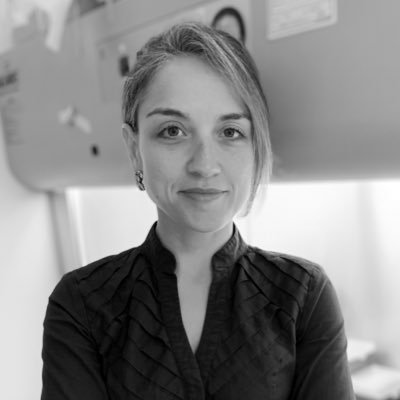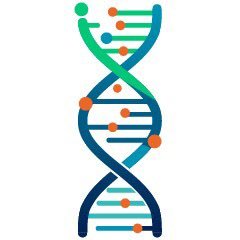
Clint Miller
@clintomics
Followers
2K
Following
4K
Media
50
Statuses
2K
Human genomicist, Assoc Prof @UVA. Deconvolving complex cardiovascular diseases using systems genetics and single-cell omics.
Charlottesville, VA
Joined April 2013
Latest news feature in @NatureBiotech on recent developments in spatial biology to unravel disease mechanisms, with insights from experts in field @aruthak @NeBanovich @AI4Pathology @PDulaiMD Jasmine Plummer, Amanda Orr etc
nature.com
Nature Biotechnology - As the next generation of spatial transcriptomics tools hits the market, researchers are uncovering previously unknown interactions that could transform clinical research.
0
2
10
The 9p21 risk locus — the first and most impactful CAD genetic risk factor in humans — drives VSMCs to adopt an osteochondrogenic state, promoting calcification @clintomics @valelosardo
https://t.co/CbZnzspnPh
0
6
19
Thrilled to share the🥇paper from the lab @atvbahajournals. Here we continue to unravel the mysteries of the 9p21.3 CAD locus showing it drives VSMC transition into an osteochondrogenic state, promoting calcification. @clintomics @UWMadisonCRB
ahajournals.org
BACKGROUND: Genome-wide association studies have identified common genetic variants at ≈300 human genomic loci linked to coronary artery disease susceptibility. Among these genomic regions, the most...
10
8
51
🚀 Thrilled to announce our latest #preprint on intraplaque haemorrhage (IPH) quantification and molecular 🧬characterisation of carotid plaques using deep learning. A thread 🧵👇🏽
1
7
9
Trump's slashing of NIH indirects blocked for now in 22 states but not VA. Will the "peoples protector" Attorney General @JasonMiyaresVA stand up for Virginia researchers and doctors and their work to cure cancer, heart disease, diabetes, and more?
JUST IN: A federal judge in Massachusetts has blocked the Trump administration's rate change to NIH grants.
2
3
17
Huge congrats to PhD student @John_S_IV for successfully defending his thesis today! Thanks to the committee and everyone for their support. @shefflab @uva_bims @MedicineUVA
0
0
15
New model for multimodal spatial omics analysis, MISO, performs feature extraction, clustering and handles large-scale omics data. Includes extensive benchmarking and application to various cancer types. @DrMingyaoLi @naturemethods
nature.com
Nature Methods - MISO (MultI-modal Spatial Omics) integrates two or more spatial omics modalities, despite differences in data quality and spatial resolution for improved feature extraction and...
1
9
36
New expression foundation model, GET, predicts gene expression in unseen cell types and context specific TF interaction networks - pretrained on chromatin accessibility data from 213 human adult and fetal cell types. @nature @ericxing @RabadanColumbia
nature.com
Nature - A foundation model learns transcriptional regulatory syntax from chromatin accessibility and sequence data across a range of cell types to predict gene expression and transcription factor...
0
0
5
New generative model, IMPA, predicts cell morphology responses to genetic and drug perturbations, enhancing phenotypic screening and drug discovery. Corrects batch effects and models unseen perturbations. @NatureComms @mo_lotfollahi @fabian_theis
https://t.co/qRAyIMugX7
nature.com
Nature Communications - Predicting morphological impacts of perturbations using computational methods can aid treatment discovery. Here, authors present IMPA, a generative model that predicts...
0
17
61
R package: https://t.co/jWOs74viIi Code: https://t.co/tnRw1053Dm Python implementation:
0
0
1
New single-cell analysis framework, LEMUR, disentangles covariates and latent cell states from multi-condition data to predict counterfactual gene expression and identify cell neighborhoods with similar DEGs without clustering. https://t.co/Dktxxek5C7
@NatureGenet @wolfgangkhuber
nature.com
Nature Genetics - Latent embedding multivariate regression models multi-condition single-cell RNA-seq using a continuous latent space, enabling data integration, per-cell gene expression prediction...
4
18
89
Delineating the effective use of self-supervised learning in single-cell genomics @NatMachIntell @fabian_theis
nature.com
Nature Machine Intelligence - Self-supervised learning techniques are powerful assets for enabling deep insights into complex, unlabelled single-cell genomic data. Richter et al. here benchmark the...
1
18
86
Very grateful and humbled to receive promotion to tenure @MedicineUVA! Huge thanks to my supportive mentors, colleagues, family, and talented trainees who continue to inspire me along this journey. Here’s to the work ahead!
20
1
79
The number of cells in single-cell transcriptomics studies grew exponentially over the years. But what about the number of donors? Let me tell you the story of my contribution to the fantastic paper of @SikkemaLisa and @KHrovatin. Read the paper: https://t.co/ZsqWm5XX0p 1/12
nature.com
Nature Methods - This Review provides a comprehensive and detailed discussion about how to build and use single-cell atlases.
1
13
49
For simulation tasks scDesign3 outperformed scFMs in simulating reference based scRNA-seq datasets @SongDongyuan @jsb_ucla
0
1
1
As expected the performance of scFMs is highly task specific..they perform well in certain tasks after fine tuning, eg cell annotation, but worse in gene regulatory networks.
1
0
1
Nice benchmarking study of 10 different foundation models for single cell data analysis..important best practices, limitations and insights to guide future applications @HongyuZhao2
https://t.co/M2dhzUnXKC
2
29
117
Virtual cell models have the potential to transform biological research. Today @ChanZuckerberg released an initial set of models, including scGenePT and SubCell, designed to be easy to run and build upon. This is a really exciting time in biology.
chanzuckerberg.com
We’re making it easier for biologists and machine learning researchers to collaborate with cell models that are easy-to-use + build upon to accelerate the next big breakthrough.
0
58
211
New method CellANOVA recovers lost biological signals and evaluates global and gene level distortions introduced from common single-cell batch correction algorithms @NatureBiotech https://t.co/EI15Gx07NR
github.com
CellANOVA: Cell State Space Analysis of Variance for signal recovery in single cell batch integration - Janezjz/cellanova
0
11
78
We use Multiome and HiC to build a comprehensive single cell variant to enhancer to gene map for coronary artery disease. Join effort with @PaulChungrohLee and IttaiEres in Nate Stitziel Lab and in collaboration with @Amgen @WUSTLmed
https://t.co/bM6RPUcUEW
medrxiv.org
Although genome wide association studies (GWAS) in large populations have identified hundreds of variants associated with common diseases such as coronary artery disease (CAD), most disease-associa...
1
11
40


















